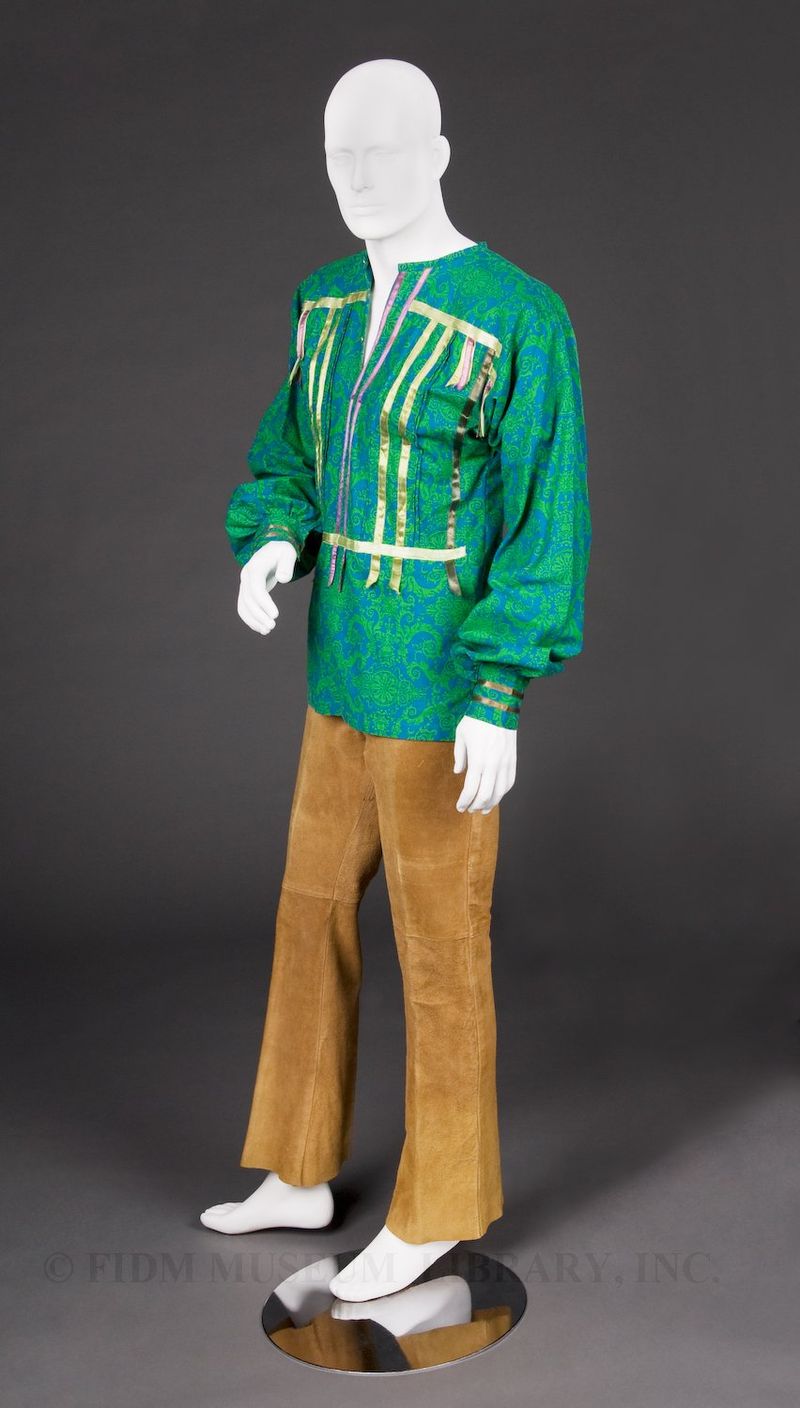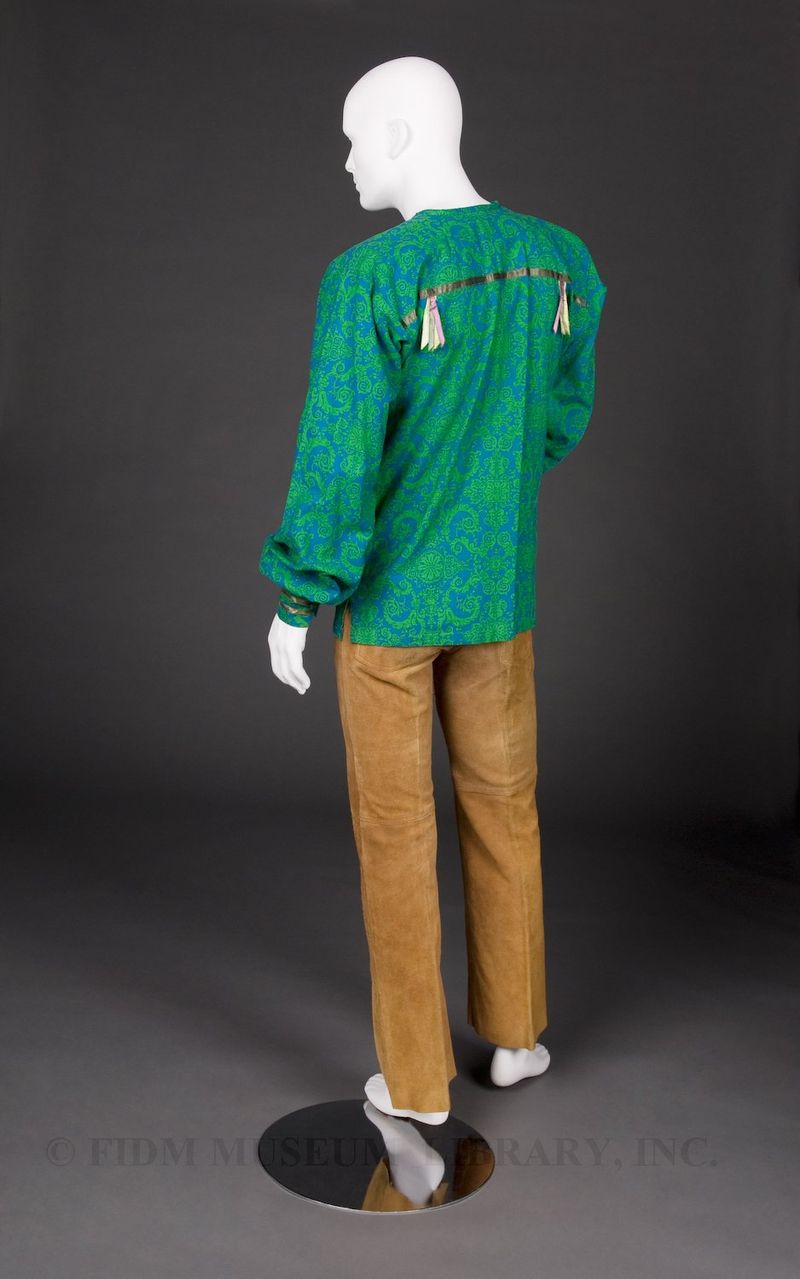Menswear
Like many museums that focus on dress and textiles, the FIDM Museum is constantly searching for compelling menswear for our collection. Most 19th and 20th century menswear is relatively straightforward; it tends to favor function over form, resulting in garments without intriguing structural or decorative elements. There are, of course, exceptions to this general statement, as you can see from the late 1960s ensemble featured in our post today.
 Smock-style shirt and suede Levi's Both c. 1967 Gift of Jay Hampel Shirt 2007.801.5 Levi's 2007.801.4
Smock-style shirt and suede Levi's Both c. 1967 Gift of Jay Hampel Shirt 2007.801.5 Levi's 2007.801.4
Beginning in the early 1960s, long-standing dress codes began to relax and even disappear. Women stopped wearing gloves and corsets on a regular basis, and men were seen in public without hats. Though sartorial expectations for both men and women became looser, men especially benefited from this change. Many men abandoned sober, dark-colored suits, plain dress shirts and constricting neckties in favor of clothing that was more personally expressive. All aspects of menswear were under assault: neckties were replaced by scarves and ascots, turtlenecks became an alternative to the button-down shirt, multi-colored shoes and sandals replaced black oxfords and hair grew longer. Color and pattern appeared in menswear, as did traditionally "feminine" fabrics such as velvet, satin and chiffon. As a whole, these changes in menswear were dubbed the "Peacock Revolution." Men in urban areas such as Los Angeles, London and New York could purchase these new styles at boutiques such as Mr. Fish (London), and Paraphernalia (New York). Some of these boutiques catered exclusively to men, while others sold garments for both men and women. Gender specificity was no barrier, however, in 1968 WWD reported that men were purchasing women's wide-legged pants for their own use at the Yves St. Laurent boutique in St. Tropez.1For those in search of an even more "authentic" look, vintage and non-Western garments could be purchased at flea markets, military surplus stores or while on the 1960s version of the Grand Tour through the Middle East or Latin America. Caftans were a popular travel souvenir for both men and women and were often reinterpreted, as in this beribboned smock-style shirt from the FIDM Museum collection.
 Back view of 2007.801.4 and 2007.801.5
Back view of 2007.801.4 and 2007.801.5
Intended to be inventive and playful, these changes in the visual character of masculinity were widely understood as a challenge to political and social conformity. Furthermore, dress was conceived as a sort of costume which allowed one to try out or take on a new identity at will. The rejection of the staid business suit freed men from societal expectations regarding personal identity and allowed for a truer expression of the self. This sartorial liberation was thought to be both personally and socially liberating. In the words of a caftan and gold medallion adorned New York dentist interviewed in GQ in March 1971, "Groovy people should wear groovy clothes. That way we turn on the whole world."
1 Lobenthal, Joel. Radical Rags: Fashions of the 1960s.New York: Abbeville Press. 1990 :138.